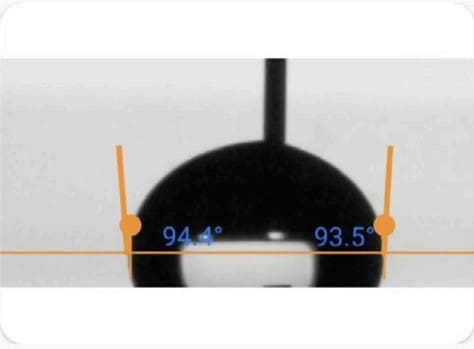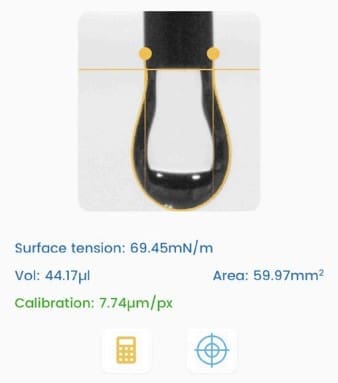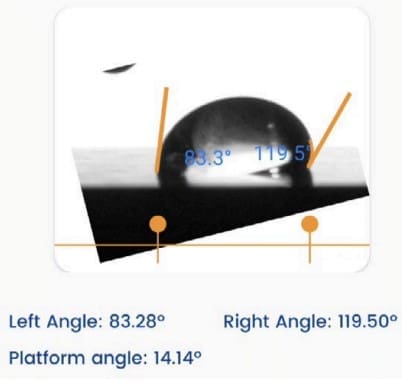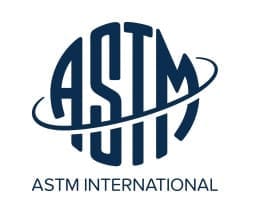Reviewed: 28
This is a practical guide to Surface Science for researchers working in the Electrical & Electronics Industry.
In this all-new guide you’ll learn all about:
Let’s dive right in.

Surface property measurements of various electronic and electrical systems are essential for quality control and reliability. As an example, a good adhesive and wetting behavior of a circuit is paramount to prevent the possibility of circuit failure. In electronic and electrical components, the adhesive and wetting behavior is affected by various factors that include the presence of contaminants on the boundary. Other areas are:

We use the important surface properties below to understand the behavior of Electrical & Electronics products and improve their quality.

Young – Laplace Method
Polynomial Method
Dynamic Contact Angle
Ideally, when we place a drop on a solid surface, a unique angle exists between the liquid and the solid surface. We can calculate the value of this ideal contact angle (the so-called Young’s contact angle) using Young’s equation. In practice, due to surface geometry, roughness, heterogeneity, contamination, and deformation, the contact angle value on a surface is not necessarily unique but falls within a range. We call this range’s upper and lower limits the advancing contact angle and the receding contact angle, respectively. The values of advancing and receding contact angles for a solid surface are also very sensitive. They can be affected by many parameters, such as temperature, humidity, homogeneity, and minute contamination of the surface and liquid. For example, the advancing and receding contact angles of a surface can differ at different locations.
Practical surfaces and coatings naturally show contact angle hysteresis, indicating a range of equilibrium values. When we measure static contact angles, we get a single value within this range. Solely relying on static measurements poses problems, like poor repeatability and incomplete surface assessment regarding adhesion, cleanliness, roughness, and homogeneity.
In practical applications, we need to understand a surface’s liquid spreading ease (advancing angle) and removal ease (receding angle), such as in painting and cleaning. Measuring advancing and receding angles offers a holistic view of liquid-solid interaction, unlike static measurements, which yield an arbitrary value within the range.
This insight is crucial for real-world surfaces with variations, roughness, and dynamics, aiding industries like cosmetics, materials science, and biotechnology in designing effective surfaces and optimizing processes.
Learn how Contact Angle measurement is done on our Tensiometer
For a more complete understanding of Contact Angle measurement, read our Contact Angle measurement: The Definitive Guide
This property measures the force that acts on the surface of a liquid, aiming to minimize its surface area.

Dynamic Surface Tension
Dynamic surface tension differs from static surface tension, which refers to the surface energy per unit area (or force acting per unit length along the edge of a liquid surface).
Static surface tension characterizes the equilibrium state of the liquid interface, while dynamic surface tension accounts for the kinetics of changes at the interface. These changes could involve the presence of surfactants, additives, or variations in temperature, pressure, and composition at the interface.
Dynamic surface tension is essential for processes that involve rapid changes at the liquid-gas or liquid-liquid interface, such as droplet and bubble formation or coalescence (change of surface area), behavior of foams, and drying of paints (change of composition, e.g., evaporation of solvent). We measure it by analyzing the shape of a hanging droplet over time.
Dynamic surface tension applies to various industries, including cosmetics, coatings, pharmaceuticals, paint, food and beverage, and industrial processes, where understanding and controlling the behavior of liquid interfaces is essential for product quality and process efficiency.
Learn how Surface Tension measurement is done on our Tensiometer
For a more complete understanding of Surface Energy measurement, read our Surface Tension measurement: The Definitive Guide

Learn how Surface Energy measurement is done on our Tensiometer
For a more complete understanding of Surface Energy measurement, read our Surface Energy measurement: The Definitive Guide
The sliding angle measures the angle at which a liquid film slides over a solid surface. It is commonly employed to assess the slip resistance of a surface.

Learn how Sliding Angle measurement is done on our Tensiometer
For a more complete understanding of Sliding Angle measurement, read our Sliding Angle Measurement: The Definitive Guide
Within the Electrical & Electronics industry, several case studies exemplify the advantages of conducting surface property measurements.
Scenario: A manufacturer of printed circuit boards (PCBs) effectively employed in-field data collection to identify an issue with the adhesion of the solder mask to the PCBs.
Application: Through this data-driven approach, manufacturers can pinpoint the problem and implement a solution that significantly improves the solder mask adhesion, reducing PCB defects.


Scenario: In the case of a solar cell manufacturer, measuring the wettability of a new type of coating proved problematic. The coating displayed strong hydrophobic properties, making it difficult for the liquid used in the measurement to wet the surface.
Application: A specialized minimal liquid technique was employed to overcome this challenge. By capturing data directly from the manufacturing environment, businesses gain access to precise and timely information, allowing them to detect and resolve issues swiftly, ultimately leading to better product outcomes and decision-making.
Scenario: Liquid metals (LMs) are conducting like other metals, at the same time, they also possess the stretchable behavior of liquid at room temperature. This property makes them suitable for stretchable electronics.
Application: An electronics manufacturer faces the big problem of attaining the desired shape as due to high surface tension LM’s tend to form spherical shapes. To deal with this issue the manufacturer decided to break up the material into smaller chunks. They then decided to stabilize the smaller chunks using a suitable surfactant. This helped them to achieve the desired values of surface tension and hence the desired shape of the LMs.

If you are interested in implementing these or any other applications, please contact us.
In an industry where precision reigns supreme, where do Electrical & Electronics manufacturers turn to ensure their products can survive scrutiny? The answer lies in standards and guidelines: the compass that guides cosmetics manufacturers through the complex maze of quality and performance.

This standard provides the standard practice for surface wettability of coatings, substrates, and pigments by advancing contact angle measurement. As per this standard, hydrophilic and hydrophobic surfaces are defined for the contact angle <45 degrees and >90 degrees respectively. A surface between hydrophilic and hydrophobic comes under the angle between 45 and 90 degrees. Water can be used as a test liquid for contact angle measurement.

This series provides the description of optical test methods to measure the contact angle, to determine the free surface energy of a solid surface and the surface tension of liquids. These descriptions are applicable to the characterization of substrates, coatings, and coating materials.
We hope this guide showed you how to apply surface science in cosmetics industry.
Now we’d like to turn it over to you:
Droplet Lab was founded in 2016 by Dr. Alidad Amirfazli, faculty member at York University, and two of his researchers, Dr. Huanchen Chen and Dr. Jesus L. Muros-Cobos.
Dropletlab © 2024 All Rights Reserved.